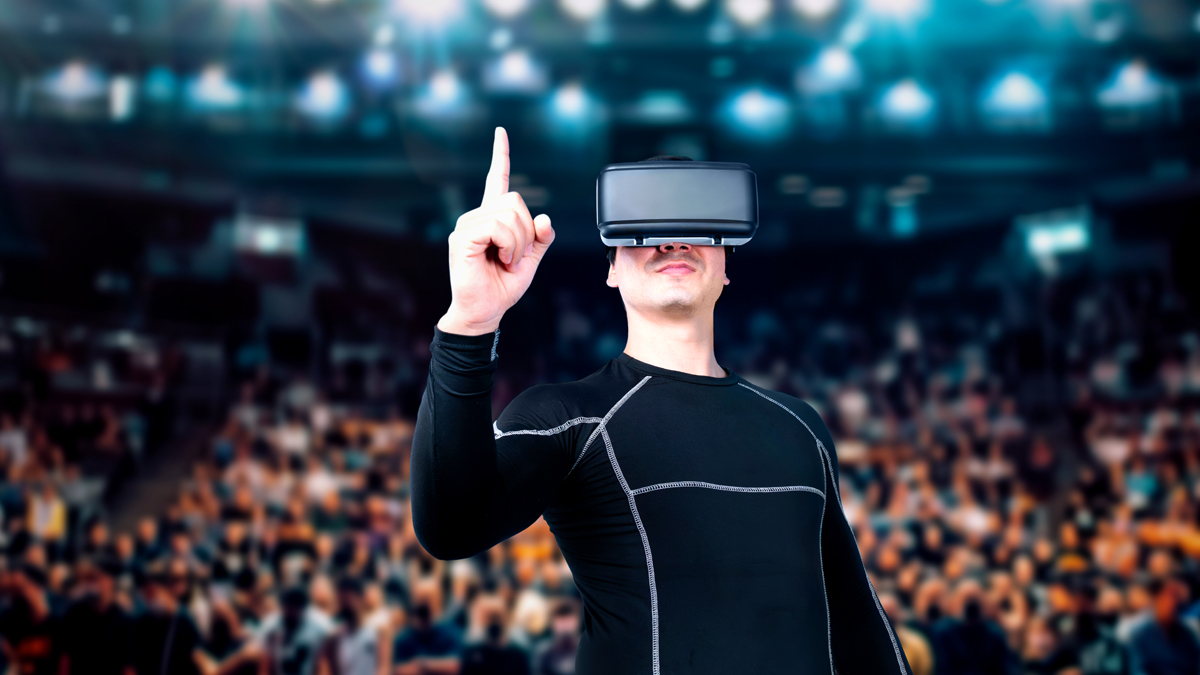Filmmakers can visualize and adjust virtual sets before construction, integrate tactile feedback for more authentic performances, and capture live metadata to streamline post-production workflows. As VR hardware and software mature, production teams gain unprecedented control over spatial design, camera work, and real–world integration reducing costs, minimizing reshoots, and enhancing creative precision. By combining real-time visualization with advanced AI and edge computing, VR on set is shaping the future of immersive production experiences in the cinema industry.
| Table of Contents | |
|---|---|
| I. | Real-Time Spatial Previsualization & Set Layout Refinement in VR |
| II. | Haptic & Force-Feedback Integration for Virtual Prop Interaction |
| III. | Volumetric Video Capture & 3D Reconstruction within VR Workflows |
| IV. | Multi-User Collaborative VR Stages for Cross-Department Coordination |
| V. | In-Headset Virtual Camera & Lens Emulation Tools |
| VI. | Virtual Location Scouting & Dynamic XR Set Extensions |
| VII. | LED Volume XR Integration with VR Environments |
| VIII. | AI-Driven Procedural Environment Generation in VR |
| IX. | Eye-Tracking & Foveated Rendering for Performance Optimization |
| X. | Low-Latency Wireless Streaming & Edge Computing for On-Set VR |
| XI. | Live Metadata Capture & VR-Driven Post-Production Data Pipelines |
Real-Time Spatial Previsualization & Set Layout Refinement in VR
Using VR headsets and controllers, production teams can instantly explore and adjust virtual representations of set spaces. Real-time spatial previsualization allows art directors and cinematographers to walk through digital sets at full scale, refine camera placements, and test sightlines before physical build. By manipulating virtual walls, props, and lighting, crews can spot logistical or aesthetic issues early, reducing costly on-site changes. This iterative process speeds up decision-making, aligns team expectations, and ensures that the final physical set matches the creative vision without multiple build-and-paint cycles.
Haptic & Force-Feedback Integration for Virtual Prop Interaction
Advanced haptic gloves and force-feedback devices let actors and crew feel virtual props’ weight, texture, and resistance within VR. By simulating tactile sensations when grabbing or moving digital objects, these tools enhance performance authenticity and help refine blocking. Haptic integration also assists prop and costume designers in evaluating ergonomics and safety before physically constructing elements. Realistic touch feedback fosters greater immersion during rehearsals, enabling directors to judge how actors interact with invisible or not-yet-built set pieces, ultimately reducing reshoots and ensuring seamless integration between real and virtual production assets.
Volumetric Video Capture & 3D Reconstruction within VR Workflows
Volumetric video capture uses arrays of depth sensors and cameras to record actors and objects in three dimensions. By importing these 3D reconstructions into VR environments, directors can preview performances in virtual settings with accurate spatial context. This approach simplifies greenscreen replacement and ensures proper scale relationships between performers and digital environments. VR-based volumetric playback enables real-time review from any angle, helping editors and VFX supervisors identify compositing issues early. The seamless integration of volumetric data into VR pipelines accelerates collaboration and improves the fidelity of mixed-reality sequences on set.
Multi-User Collaborative VR Stages for Cross-Department Coordination
In a shared VR stage, multiple users from directors to set designers can inhabit the same virtual space simultaneously. This multi-user collaboration enables real-time feedback on lighting, blocking, and scenic design across departments, regardless of physical location. Creative and technical teams can mark up environments, suggest changes, and simulate camera moves together, fostering clearer communication. By centralizing reviews in VR, production schedules become more efficient, as potential conflicts are resolved early. This collaborative approach aligns creative visions and keeps everyone on the same page from preproduction through principal photography.
In-Headset Virtual Camera & Lens Emulation Tools
Modern VR software includes virtual camera modules that replicate physical camera properties, like focal length, aperture, and depth of field. Operators can frame shots in VR headsets as if handling real cameras, adjusting virtual lenses to test composition and bokeh effects. These emulation tools also simulate lens distortion, motion blur, and provide an accurate sense of the final image. By rehearsing camera moves and shot sequences in VR, crews can identify framing challenges early, plan complex camera paths, and optimize equipment choices before arriving on the physical set.
Virtual Location Scouting & Dynamic XR Set Extensions
With VR, location scouts can capture 360-degree imagery of real-world sites and import them into virtual environments for immersive review. Teams can evaluate lighting conditions, sightlines, and logistical considerations from anywhere. Furthermore, XR set extensions let designers augment practical sets with digital wings, making small stages appear vast. By dynamically adjusting virtual elements around physical props, productions can test how digital and real worlds blend. This capability accelerates decision-making on locations and reduces travel costs while ensuring that virtual extensions align seamlessly with on-site shooting conditions.
LED Volume XR Integration with VR Environments
LED volume stages project real-time rendered backgrounds onto large LED walls, creating dynamic virtual environments during filming. Integrating these volumes with VR allows teams to switch between headset-based views and LED displays seamlessly. Filmmakers can test composite visuals in VR, ensuring color consistency and parallax accuracy when shooting through LED walls. This hybrid setup combines the low latency of physical LED volumes with the flexibility of VR worlds, giving production crews confidence that visuals will match across devices and minimizing the need for later compositing corrections.
AI-Driven Procedural Environment Generation in VR
Artificial intelligence tools can procedurally generate landscapes, architecture, and set dressings within VR environments. By feeding AI models reference images or scene parameters, production designers can produce diverse samples in seconds. These generated environments serve as starting points for visual development, which artists can refine further. Procedural generation speeds up creative exploration, offering options that might not be intuitive manually. In VR, teams can inhabit these AI-created worlds instantly, tweaking elements in real time. This integration reduces manual modeling workload and inspires novel design ideas for immersive set experiences.
Eye-Tracking & Foveated Rendering for Performance Optimization
Eye-tracking sensors in VR headsets detect where users look, enabling foveated rendering, which prioritizes high-resolution graphics at the gaze point while reducing detail in peripheral areas. This optimization conserves computational resources without sacrificing image fidelity where it matters most. On set, eye-tracking data can reveal how crew members focus on virtual elements, informing set design and camera placement. Performance optimization through foveation ensures smoother frame rates in complex VR scenes, reducing motion sickness and boosting comfort during long rehearsals. Efficient rendering also allows for more detailed simulations on available hardware.
Low-Latency Wireless Streaming & Edge Computing for On-Set VR
Wireless VR streaming solutions leverage high-speed protocols and edge computing to deliver low-latency video feeds to headsets on set. By offloading heavy rendering tasks to nearby edge servers, headsets can maintain high frame rates and quality without bulky hardware attachments. This mobility empowers directors and crew to move freely within large stages while monitoring virtual environments. Low-latency streaming reduces sync issues between multiple headsets and ensures consistent experiences in multi-user scenarios. Edge computing also adapts to variable network conditions, dynamically balancing load to maintain smooth VR playback during live production.
Live Metadata Capture & VR-Driven Post-Production Data Pipelines
Integrating VR with data tracking systems allows on-set metadata capture, camera positions, lens settings, lighting data, and actor movements to be logged in real time within virtual environments. This rich dataset feeds directly into post-production pipelines, automating VFX tracking, scene reconstruction, and color grading references. VR-driven metadata visualization tools help editors review context quickly, reducing manual data entry. By maintaining a synchronized record of production details, teams can achieve more accurate composites and faster turnaround. This end-to-end integration streamlines the workflow from set to edit, improving consistency and reducing post bottlenecks.

